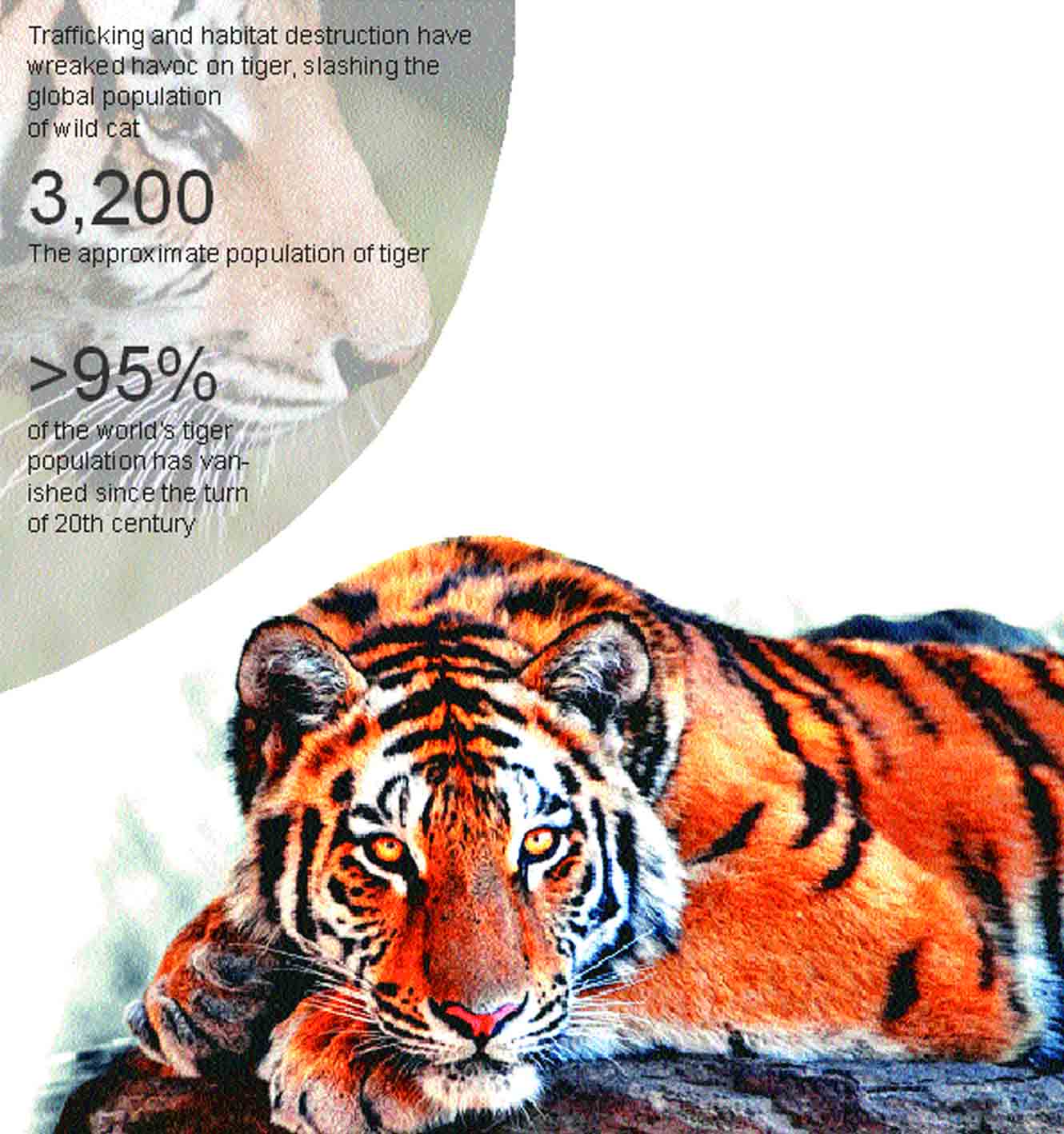Wild cat population up but threats persist
KATHMANDU, July 29
The fifth World Tiger Day was observed in the capital on Wednesday by organising a special event to build greater awareness on tigers and their conservation.
Government officials and representatives from WWF Nepal, partners and stakeholders gathered in Rastriya Nachghar, Jamal, to engage youths in various events and competitions related to tiger conservation. They also pledged to carry out proactive measures to double the tiger population by 2022.
On the occasion, WWF Nepal’s The Generation Green campaign brought together more than 1,000 young minds through a variety of events to bring out their interpretations of tigers and their protection.
Anil Manandhar, Country Representative of WWF Nepal, said, “We are looking at a future where tigers can roam freely in the safety of their homes, where tigers can thrive from one generation to the next. This future needs to start from the present.”
In 2009, Nepal had signed ‘St Petersburg Declaration on Tiger Conservation’ to express commitment to double the number of wild tigers from 121 to 250 individuals by 2022. In 2013, Nepal counted tiger population at 198, a remarkable achievement from 2010 when the number of wild cats was 121.
Of the 198 tigers, 120 are in Chitwan National Park, 50 in Bardiya National Park, 17 in Shukla Phanta Wildlife Reserve, seven in Parsa Wildlife Reserve and four in Banke National Park. The Bardiya National Park is one of the best wild reserves for the endangered big cats.
Government officials and conservation organisations expressed confidence that Nepal would able to achieve the 2022 goal given the present increasing trend of tigers, while emphasising on mitigation of human-tiger conflict.
They also suggested enhanced dispersal of tigers as the need of hour to maintain and create an animal-friendly environment for its population growth.
According to the Ministry of Forest, substantial increase in the tiger population reflects current conservation efforts in the country. Habitat restoration, control of poaching and illegal wildlife trade and engagement of local communities in conservation have yielded positive results towards increasing the tiger numbers.
Ministry officials said that the government in coordination with security agencies and partner organisations had stepped up its efforts and awareness-raising programmes in the central and local levels to increase tiger population.
According to WWF Nepal, tigers are found in the Tarai Arc Landscape stretching 600 miles across 15 protected area networks in Nepal and India. The two countries embarked on the first-ever joint tiger survey using a common methodology in January 2013 to count the tigers.
A century ago, more than 100,000 tigers roamed across 30 nations, but their population now has been estimated to be 3,200.
Poaching for trafficking tiger body parts and deforestation for pulp, paper, palm oil plantations have caused in massive decline in tiger population since the turn of the 20th century.
Nepal’s success story
• Nepal achieved global recognition for its conservation efforts by celebrating ‘zero poaching years’ in 2011 and 2013 respectively, meaning not a single tiger was killed by the poachers
• Tiger population in Nepal increased by 63 per cent to 198 in 2013 from 121 in 2009
Chitwan National Park 120
Bardiya National Park 50
Shukla Phanta Wildlife Reserve 17
Parsa Wildlife Reserve 7
Banke National Park 4






